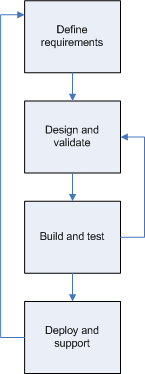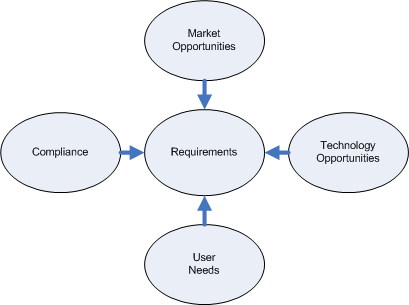
Let’s look at each of these phases and discuss how to integrate UX design activities and artifacts into them.
Defining Product Requirements
Although requirements definition occurs at the start of most product development processes, it is often the last phase UX professionals successfully infiltrate. Indeed, if you are helping define requirements, you are at Jakob Nielsen’s Stage 7 on his eight-stage usability maturity model.![]() Yet this phase is key to user-centered design, and it is where UX professionals can often add the greatest value.
Yet this phase is key to user-centered design, and it is where UX professionals can often add the greatest value.
There are four significant influencers of requirements, as shown in Figure 2:
- market opportunities
- technology opportunities
- compliance
- user needs

Market opportunities are features and functionality customers have indicated they would be willing to pay for. They do not necessarily reflect user input. In fact, such requirements frequently do not come from actual users, but instead, from meetings with their managers. Therefore, they tend to focus on high-level business needs. They describe what a product needs to accomplish, not how it does it. As a consequence, there is not as great a role for UX professionals to play as market opportunities influencers as there is for them as user needs influencers, which I’ll discuss shortly.
Technology opportunities influence the features and functionality that result from newly acquired technical capabilities. They aren’t usually things customers or users are asking for, because they can’t even conceive of them. As Henry Ford said, if he had asked his customers what they wanted, they would have said, “a faster horse.” UX professionals can have a positive impact on defining such requirements by staying abreast of technology advances that can enhance the user experience. For example, technologies such as faceted metadata have improved the search experience, and advances such as Ajax (asynchronous JavaScript and XML) have made richer user interactions possible on the Web.
Compliance with Section 508 accessibility requirements or other types of external forces, as well as internal forces such as corporate standards or a need for globalization also drive requirements definition. UX personnel can add value here, because of their specialized knowledge about accessibility and their familiarity with corporate guidelines and design patterns.
